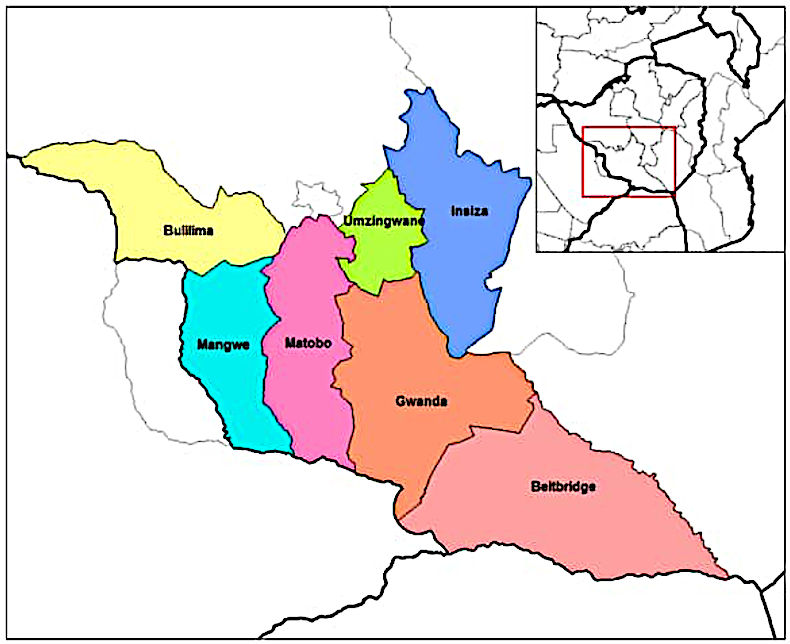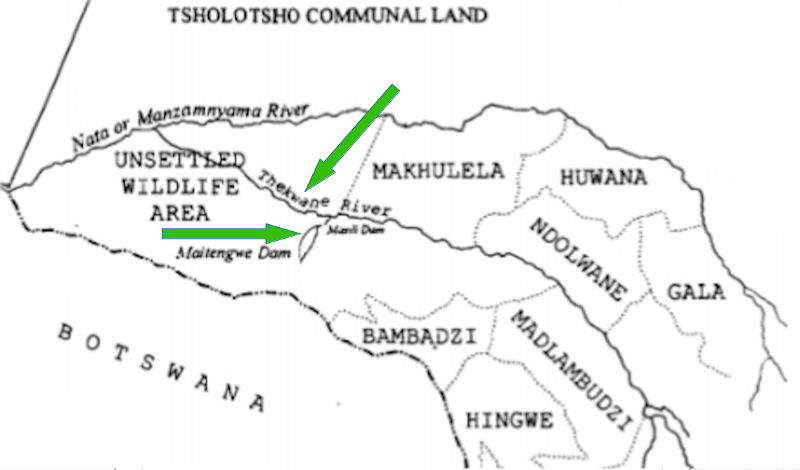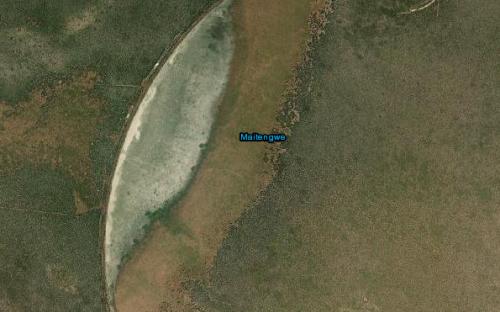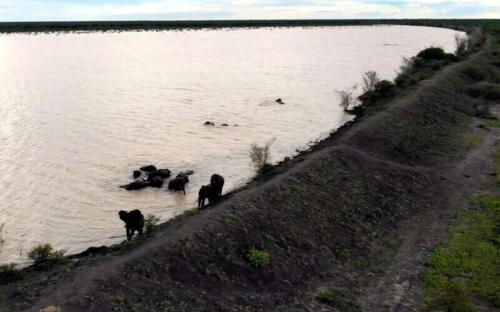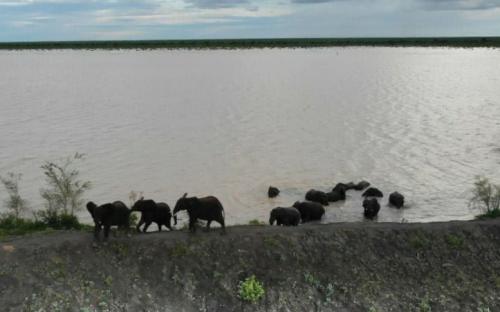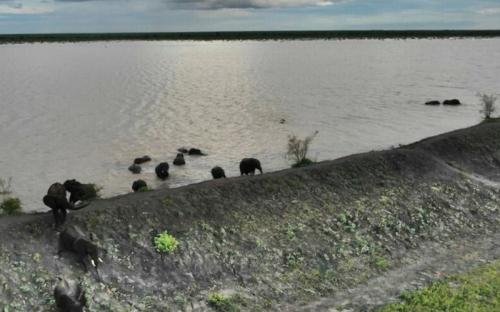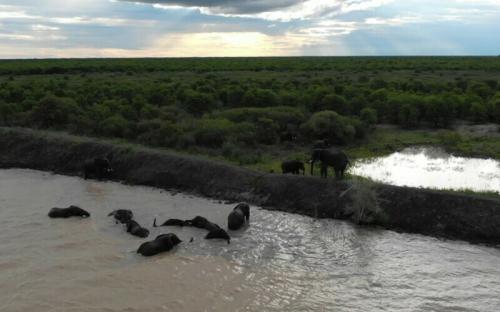Maitengwe Dam Report
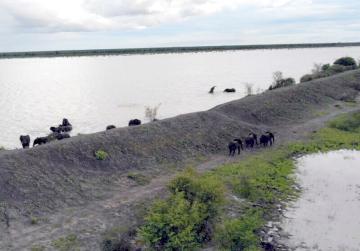
Maitengwe Dam is an impressive earth wall dam located in the north-western corner of Bulilima district, Matabeleland South Province, Zimbabwe.
It is situated 220km west of the city of Bulawayo, 120km north-west of Plumtree town and is very near the border between Zimbabwe and Botswana.
It lies in Zimbabwe's semi-arid Natural Region IV and is actually very near Hwange National Park, Zimbabwe's largest natural reserve. It is also just inside the Kavango Zambezi Transfrontier Conservation Area (KAZA TFCA).
Popularly known as Mabhongwane dam, meaning 'roaring lion', it was constructed in the 1960s by the then Government of Rhodesia, through the African Development Fund (ADF), the precursor of the District Development Fund (DDF), to support wildlife, livestock, domestic and agricultural activities in the more than 36 000 strong Maitengwe community.
Water from the nearby Thekwane River is diverted into the dam, which has an estimated capacity of 500 000m³, behind a nine kilometre earth dam wall, one of the longest in the world. The original project included an irrigation scheme.
Because of the size of the infrastructure, the Zimbabwe National Water Authority (ZINWA) serves in a technical oversight role on behalf of the Government.
At the height of the war of independence in the late 1970s, the irrigation scheme and subsequently the dam itself were abandoned by the responsible local government authorities. Without maintenance, the dam was eventually breached. It was rebuilt in 1990.
In 2011, there was a large new breach on the Thekwane River diversion. Repairs to that later in that same year, were preceded by the raising of the spillway with one metre of masonry, so as to capture more water in the dam.
However, with the dam's capacity apparently now increased beyond what it could carry, the feeder diversion breached yet again, eight more times, in 2013. Since then no significant amount of water collected in the dam, as most of it was lost as runoff through the ever widening breaches.
Due to the semi-arid conditions in these parts of the country, the breaching of Mabhongwane/Maitengwe has resulted in serious water scarcity, mostly for wildlife, livestock and domestic consumption. This has led to a high incidence of human and wildlife conflict within the surrounding communities, with lions and elephants encroaching the nearby communal areas in search of water and endangering human life.
Ultimately, the area around the dam had ceased to generate income under the CAMPFIRE programme, as much of the wildlife had migrated to other places such as Tsholotsho, in search of water.
In 2022, the CAMPFIRE Association with critical financial support from KAZA TFCA engaged a contractor to repair the breached sections of the dam, outlets and the spillway. ZINWA provided technical assistance during both the tendering process and the dam rehabilitation work.
Reconstruction of breached sections of the dam wall, clearing of termite mounds, trees and shrubs, and removal of the masonry spillway commenced in late August 2022, and were all completed in November 2022, at a cost of nearly US$180 000.
Following the 2022-23 rainy season, the dam has once more reached its full capacity, with excess water spilling via the natural spillway at the southernmost point.
Once again, Maitengwe dam is serving wildlife and the surrounding communities as intended, with a variety of wildlife species, including elephant, impala and waterbuck gradually returning to the area, thanks to the significant amount of water harnessed in the rehabilitated dam.
By August this year, more than 400 elephants were being seen on a daily basis, roaming in the vicinity of the dam.
As game and bird numbers increase, revenue from the licensed hunting operations and other nature related activities under the CAMPFIRE programme, such as photography, birding and even fishing, is also expected to rise, in turn improving the livelihood of the local communities.
Unfortunately, the dam wall continues to be under threat from elephants which are climbing all over it, to access deep water. This has resulted in the formation of ridges, and over time may cause renewed weakening of the wall.Meanwhile, a Dam Maintenance Plan has been agreed to by the stakeholders concerned, and Bulilima Rural District Council has secured most of the necessary equipment, including a 10 tonne tipper truck and a tractor-loader-backhoe (TLB), for this task.
Accordingly, weak points of the dam wall where elephants climb over, are already being attended to using the available equipment to backfill and compact the soil.
Also, working closely with Bulawayo based safari operator Mvimi Safaris, in September Council engaged ten casual workers to clear all the bushes growing on the dam wall, as they too are likely to weaken the structure and possibly lead to another breaching.
The future looks bright again, for people in this corner of Matabeleland South Province.

